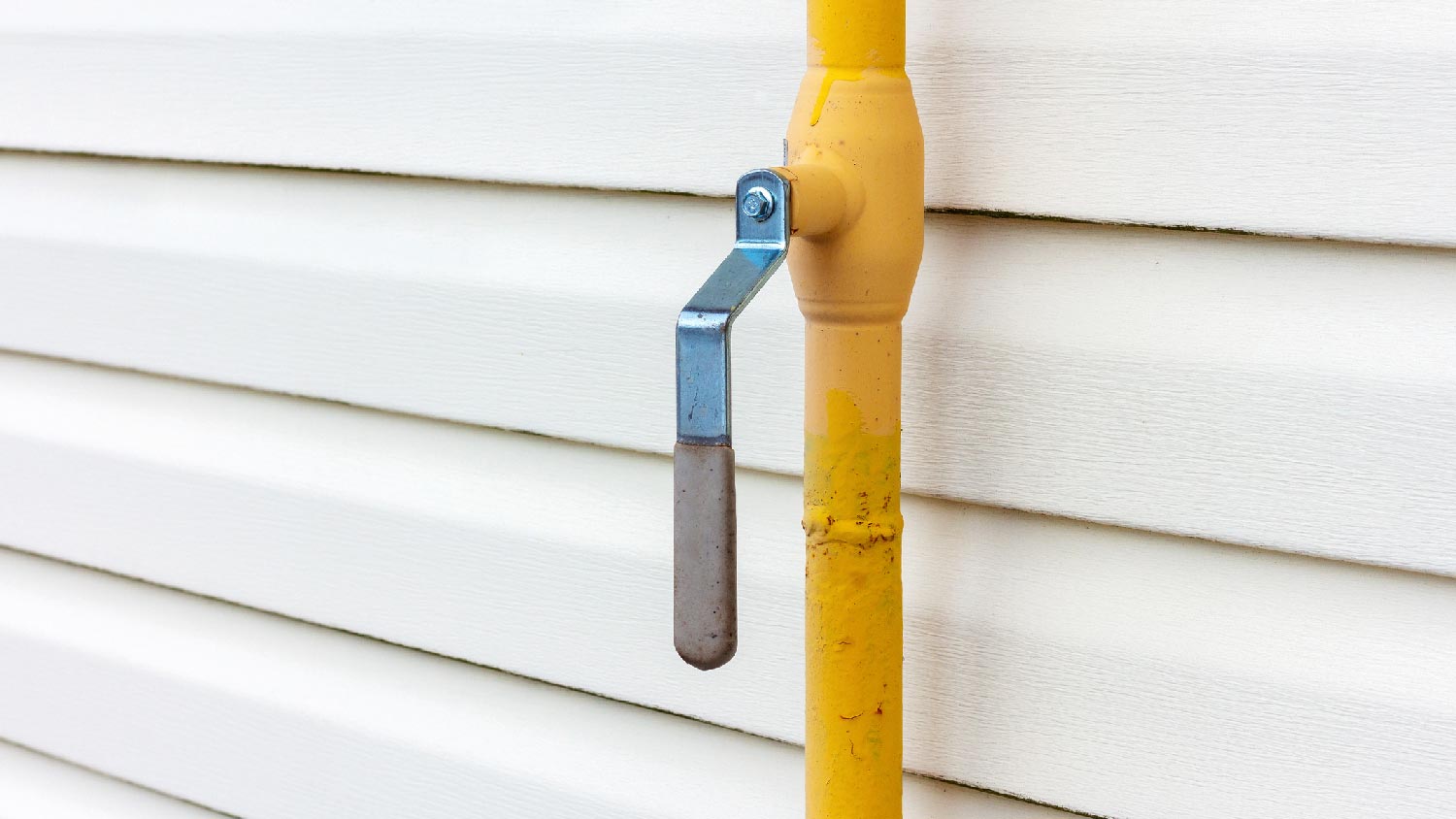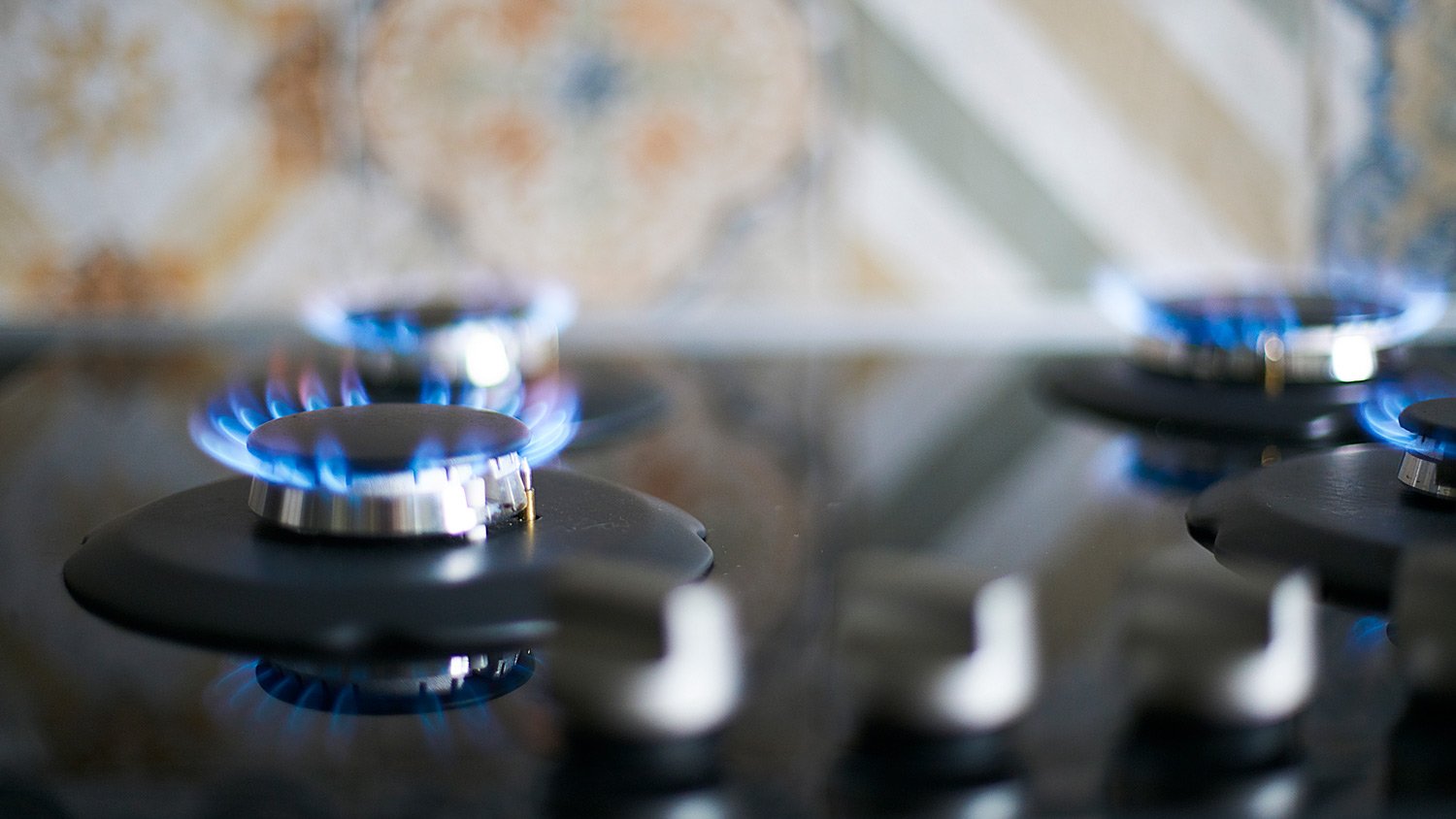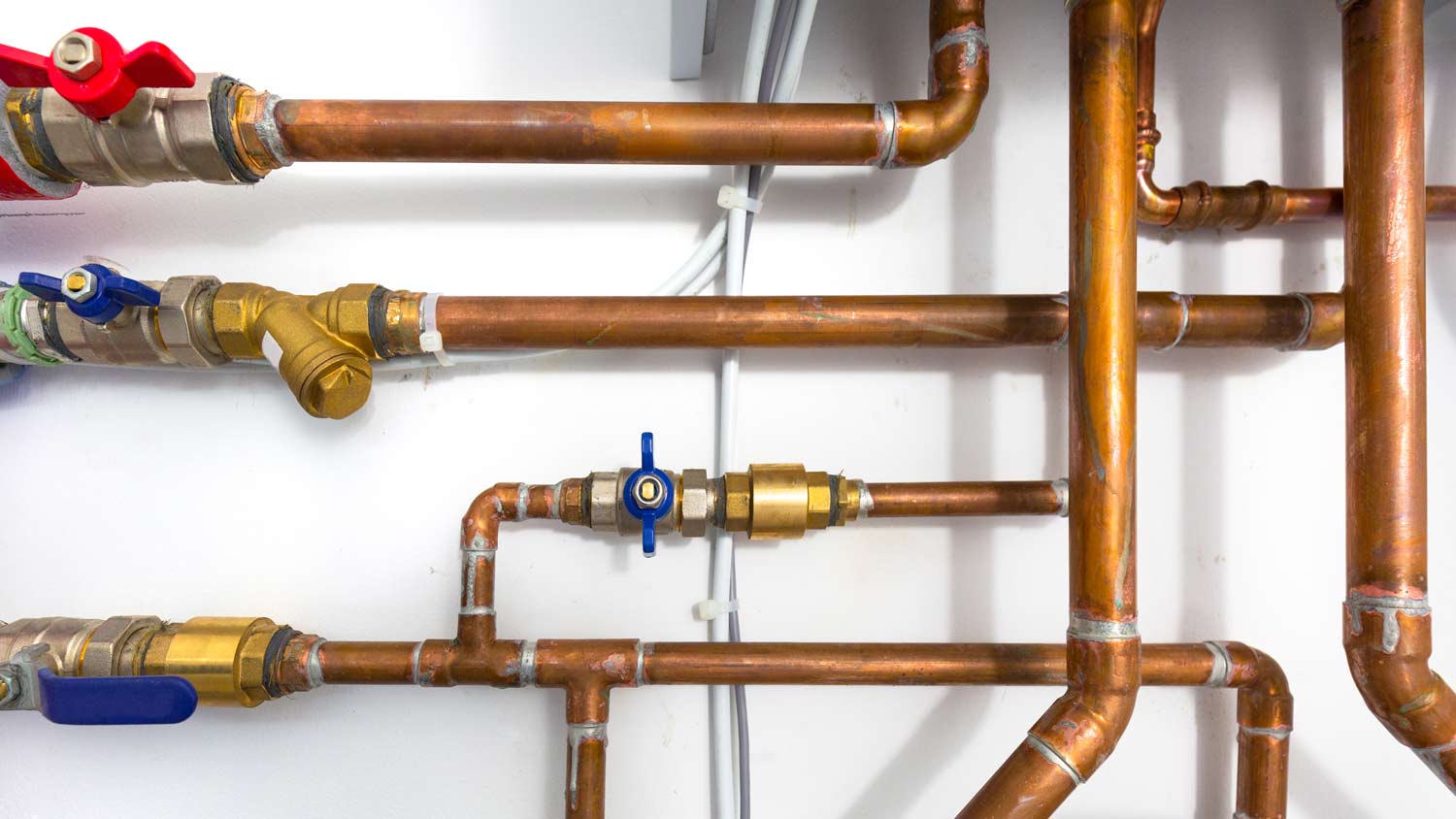
Find costs to repair a gas line and plan your budget based on the problem, from excavating for a new line to making a minor repair to an existing one.
If properly installed, your chance of a fire from CSST is as rare as a lightning strike


Flexible gas lines are made from corrugated stainless steel tubing (CSST)—a bendy, yellow-jacketed option that replaces black steel piping.
Risks related to lightning strikes and house fires are low when CSST is installed properly.
CSST resists damage and leaks, is durable, and is easy to expand to new appliances or spaces.
Alternative options include traditional black iron, polyethylene, and rigid stainless steel piping, which all have pros and cons of their own.
Always hire a licensed pro to inspect, install, repair, and replace gas lines.
Many homeowners scratch their heads when they see bending yellow gas lines in their homes instead of the traditional black steel pipes. If your house was built in the United States between the early ’90s and mid-2000s, you likely have natural gas piping made from corrugated stainless steel tubing—a popular, flexible replacement for black steel pipes. While flexible gas lines are safe if properly installed and less likely to leak gas, corrugated stainless steel tubing can lead to major house fires if struck by lightning.
If you’re wondering what the hype is with flexible gas lines, let’s clear some things up. Flexible gas lines are made from corrugated stainless steel tubing (CSST). These extremely flexible pipes are made from stainless steel and often come coated in a trademark yellow casing, though they can be black. This clever revamp of the traditional black steel pipes allows natural gas to travel to your fireplace, furnace, stovetop, and any other appliances that use natural gas.
In short, flexible gas lines are perfectly safe as long as they’re properly installed. A CSST gas line that is not correctly grounded or bonded can leak natural gas or become ignited, leading to a major fire hazard.
Let’s look at exactly why that happens: CSST is extremely thin compared to the traditional 4-mm black pipe. At about 0.2 mm, or the thickness of two sheets of paper, the odds of lightning surging through improperly grounded and bonded CSST rise. If this happens, the electricity from the lightning can arc, puncture a hole in the line, ignite the gas inside, and cause a fire.
You need a professional for this job, and they don’t come cheap.
When it comes to house fires, you shouldn’t worry—obsessively at least—about your CSST. According to the U.S. Fire Administration, cooking is by far the number one cause of house fires nationwide, making up 51% of residential fires. Lightning strikes are much rarer, accounting for only a portion of the 1.8% of residential fires caused by natural disasters. Those odds are even lower if you look at how many lightning strikes lead to fires via CSST.
That said, when CSST pipes burst, the pipe turns into a potential giant lightning rod. If the CSST isn’t properly bonded electrically, this can lead to a disaster.
It’s important that you have your home inspected by a local pro, especially if you aren’t sure about the status of your gas lines.

Speaking of the status of your gas lines, knowing which kind you have is key to determining whether or not your home is at risk of a gas line fire or leak.
To see if you have CSST, look for long stretches of yellow-jacketed, flexible tubing in your basement, crawlspace, or attic. The short flexible connector to your gas-fired stove, furnace, or hot water heater is not CSST.
Flexible gas lines bring many benefits compared to their traditional counterparts. Consider the following advantages to determine whether they’re right for your home.
Improved safety: Flexible gas lines are more resistant to damage and leaks than traditional gas lines, making them a safer alternative in many ways.
Durable: These gas lines are also quite durable and able to withstand many environmental conditions and temperatures.
Installation ease: Since flexible gas lines have fewer fittings and connections, they’re easier and less expensive to install than other types.
Versatility: The flexibility of these gas lines allows them to work for many different applications, ranging from connecting fixtures and appliances to reaching through tight and challenging spaces. CSST also comes in a variety of diameters, so your plumber should be able to find the right home gas pipe size for your needs.
Expansion ease: Most flexible gas lines use a multiport manifold system that allows for easy expansion should you add new appliances or rooms to your home.
Reduced leak risk: Flexible gas lines have fewer joints and connections than other types, thanks to their flexibility, which reduces the risk of gas leaks.
Lower maintenance: Unlike many of their traditional counterparts, flexible gas lines don’t require chemical injections to prevent corrosion, making them a lower-maintenance option.
Flexible gas lines are convenient, affordable, and durable, but they’re not your only option. Some homeowners and contractors still prefer more traditional types of gas pipes. If you’re looking for alternatives to flexible gas lines, here are a few options worth considering:
Black iron pipe: This type of gas pipe has been the go-to for decades. It’s tough, doesn’t flex, and can last longer than flexible options. A pro must carefully measure, cut, and thread the pipes and seal each joint for leak-proof installation.
Polyethylene (PE) pipe: PE piping is equal parts flexible and sturdy, and it’s easy to install in homes or underground. However, underground installations need careful placement or rocky or abrasive soil can damage the pipes. PE pipes are recyclable and the joints are easy to fuse with heat or mechanical fittings.
Rigid stainless steel pipe: Rigid stainless steel gas pipes are easy to install and don’t require threading. They’re pricier than black iron, but they resist rust and corrosion and hold up well over time.
Flexible stainless steel piping: This is a hybrid solution for homeowners who want some flexibility without the safety concerns of CSST gas lines. Flexible stainless steel piping is designed to be more resistant to lightning-related damage than CSST.
Soft copper tubing: Rigid copper pipes have become less popular and may not meet code in some areas, but soft copper is still used. It bends easily, so it doesn’t require multiple fittings. While it’s a good option for propane systems, natural gas can degrade it. If you are considering this option, talk to a gas plumber or local gas appliance repair service to make sure it fits your job.
The cost to replace flexible gas lines usually falls between $2 and $4 per linear foot. Correcting an existing installation can cost as little as $100, while replacing CSST with black pipe can cost several thousands of dollars. Expect to pay around $250 to correct the existing CSST and about $4,000 to replace it.
To get a quote, contact a local home inspector or licensed electrician near you to inspect your gas lines. Tell them you think you have CSST gas lines and want to make sure they’ve been properly grounded.
Keep in mind running, installing, or repairing a gas line often involves two different fields of expertise. You may very well need to hire a natural gas plumber in your area to install the actual gas line and hire an electrician to handle the electrical circuit if any repairs are necessary.
These folks were wonderful! What we thought might take months to actually get a quote and then get the work done turned out to be a little over a week. The work was above a 5.0 rating. They will definitely be my first choice for all future home repairs. I can't say enough great things...
The work was absolute perfection! I had flooring done all thru the house it is gorgeous. Sheetrock and a full bathroom conversion from tub to shower with handicap toilet and a lighted vanity which is beautiful . Roof & windows were leaking that was fixed you canâ  t even tell it ever...
Sean was wonderful. He fixed what someone else had botched up, and took the time to show me how to use the equipment he installed. He was on time, definitely knows his stuff, and pricing was reasonable. I wish I would have found him in the first place. Call him first! He found the problem...
This project started off great. Ryan seemed to be a very dependable, conscientious, young man. We hired him to repair/replace a gutter and to replace fascia on side of our home. The gutter was repaired in scheduled timeframe and workmanship was excellent. He stated that the remaining...
Timely fair pricing.. Courteous and friendly. I would Highly recommend Ron and his service for anyone needing home repairs.
Great Communications ... Knowledgeable ... Quoted work in advance ... Easy to schedule ... Arrived on time ... completed the work promptly and effectively. Highly recommended for residential generator repair / service or install..
Mike showed up promptly, took pictures of my problem areas, told me what needed to be done to repair the problem . He gave me a very reasonable price and told me that he could repair it right then. When he finished, he show me pictures of what he did and told me that if ?I still had a leak...
Very professional and honest gentleman. Had my issue repaired in no time. Very pleasant. Will definitely use them from now on!
Abraham, the owner, is great. Very friendly and professional. He and his assistant explain d everything that he was going to do before starting the job, repairing a hole in the master bedroom ceiling. They covered and draped the entire room to to keep the dust down and then expertly...
We discovered Reuben Wingo many years ago. He is an amazing mechanic. Very professional, honest, forthright and kind. He has never encountered a problem with our cars that he could not repair. His prices are very reasonable and affordable. We highly recommend him.
From average costs to expert advice, get all the answers you need to get your job done.

Find costs to repair a gas line and plan your budget based on the problem, from excavating for a new line to making a minor repair to an existing one.

Whether it's time for pipe replacement or to hook up the range of your dreams, gas line installation cost is an important line in your budget. Let's take a look.

Curious how deep gas lines are buried? We’ve unearthed the answer and the dirt on how far down those lines might be lying in wait.

Gas leaks pose serious risks to your home and health. This essential homeowner guide teaches you how to check a gas line for leaks and steps to help prevent them.
Is a homeowner liable if a contractor hits a gas line while digging? Not if you or your contractor have the gas line marked before digging.

Trying to decide which home gas pipe size fits? We look into home gas pipes, standard sizes, how to measure, and factors that will influence your choice.